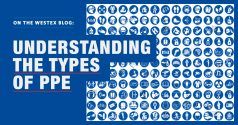
Is My Employer Responsible for Providing Electrical Ppe?
General 31 Aug 2021
NFPA® 70E provides a system of checks and balances to account for electrical hazard safety on your job site. The hierarchy of risk controls provides safety managers and employers a host of administrative and engineering tools to help prevent arc flash incidents and mitigate injuries should an incident occur. Because the onus falls to employers, using the full range of mitigative controls available to you makes both fiscal and business sense—and one of the most effective tools available is the use of personal protective equipment (PPE).
Understanding Employer Responsibility
Employers bear the lion’s share of risk in most electrical hazard situations. While employees certainly play a role in perpetuating a safe work environment, NFPA® 70E is clear about employer responsibilities. Chapter 110.7 outlines your duties as either a contract employer or a host employer, which can include:
Communicating between host and contractor employers to flag any hazards that employees might not recognize and completing qualified risk assessments required by Chapter 1 of NFPA® 70E. Ensuring employees are instructed in the hazards present on a job site, in addition to providing the basic training required by NFPA® 70E. Reviewing this chapter with your entire safety team at set intervals is key to adhering to the standard.
Why PPE?
As mentioned, there are tools to help make and keep a job site safe; yet, PPE may be one of the most tangible. Simply put, PPE—including daily wear flame-resistant (FR)/ arc-rated (AR) garments—form a final layer of defense should all other safeguards fail. FR/AR PPE can mitigate arc flash injuries so much so that it can make the difference between sustaining life-threatening burns or walking away from an incident.
FR/AR garments serve a dual purpose in the process of protecting the wearer: these garments self-extinguish once a flame source—in this case, an arc flash—is removed, and they provide insulation against severe burns. Along with other PPE, like goggles, gloves and hoods, FR/AR garments are readily available protective items mandated by NFPA® 70E that help shield the wearer from second- and third-degree burns.
For employers, it’s important to note how PPE can help you achieve compliance. Because it is necessary when working on energized systems, providing employees PPE helps further your regulatory standing. It is in your best interest to provide these items so that there is no question of whether an employee has access to them.
It’s also important to know how your PPE selection can help—or hinder—your risk burden. Providing PPE is undoubtedly a step forward in setting up a safe work environment and adhering to the standard, but PPE is only as useful as it is utilized. An employee must be wearing the PPE properly and when necessary to realize full protection. Noting that task-based PPE is subject to greater human error precursors—meaning it is subject to human shortcomings or improper risk assessments—this type of PPE may not alleviate your risk. Daily wear PPE, by contrast, is worn throughout the day and is not donned or doffed as the situation requires; therefore, it is more likely employees will have some measure of protection on their person in case of an arc flash.
Are you an employer facing electrical hazards?
Understanding your responsibility as an employer can be daunting, but the Westex team is here to help. Contact us today to learn more about how our FR/AR fabrics, when incorporated into daily wear protective garments, can provide a measure of compliance and peace of mind for your job site.


